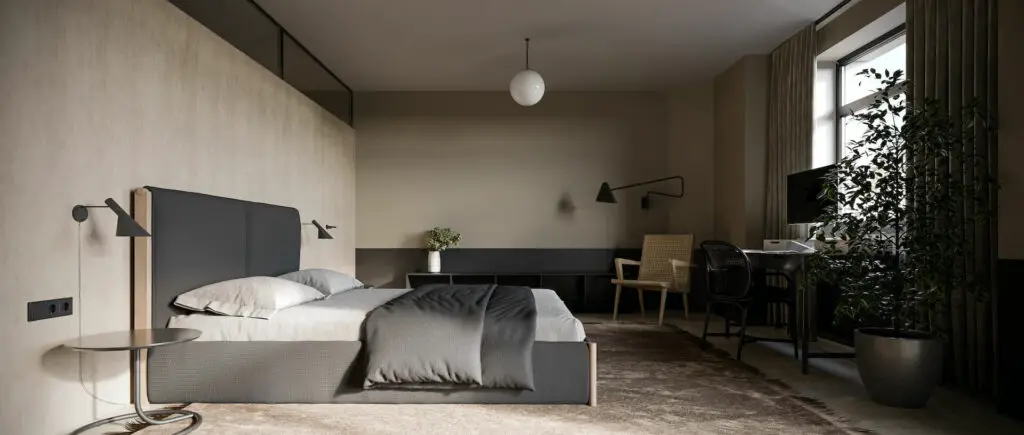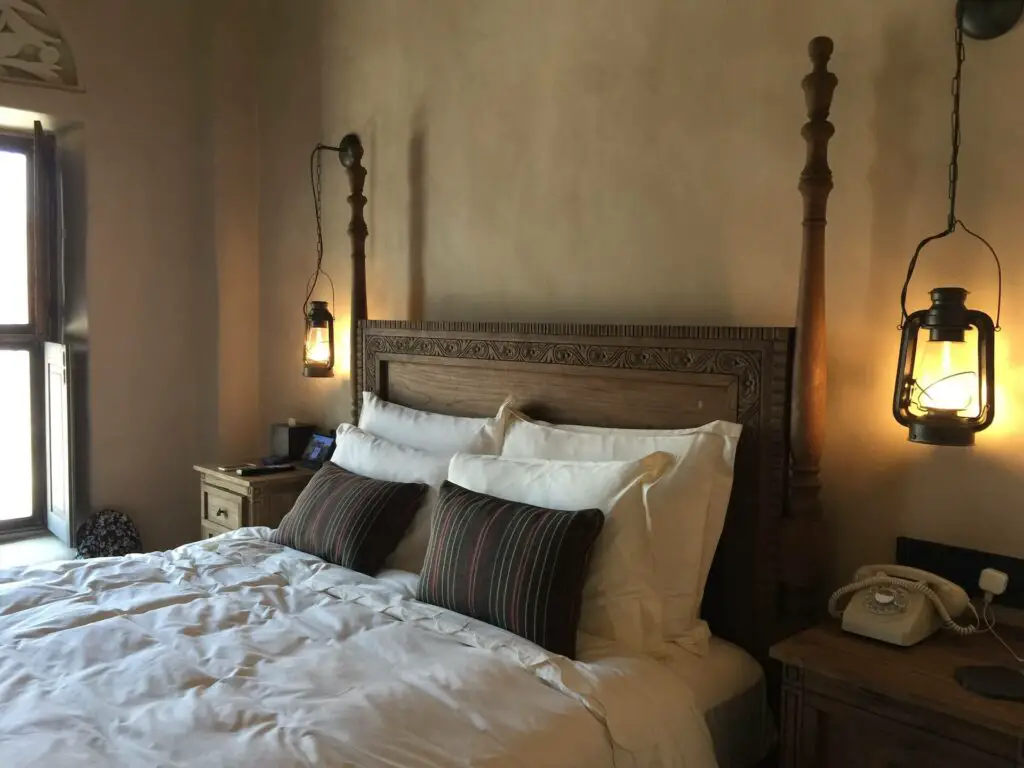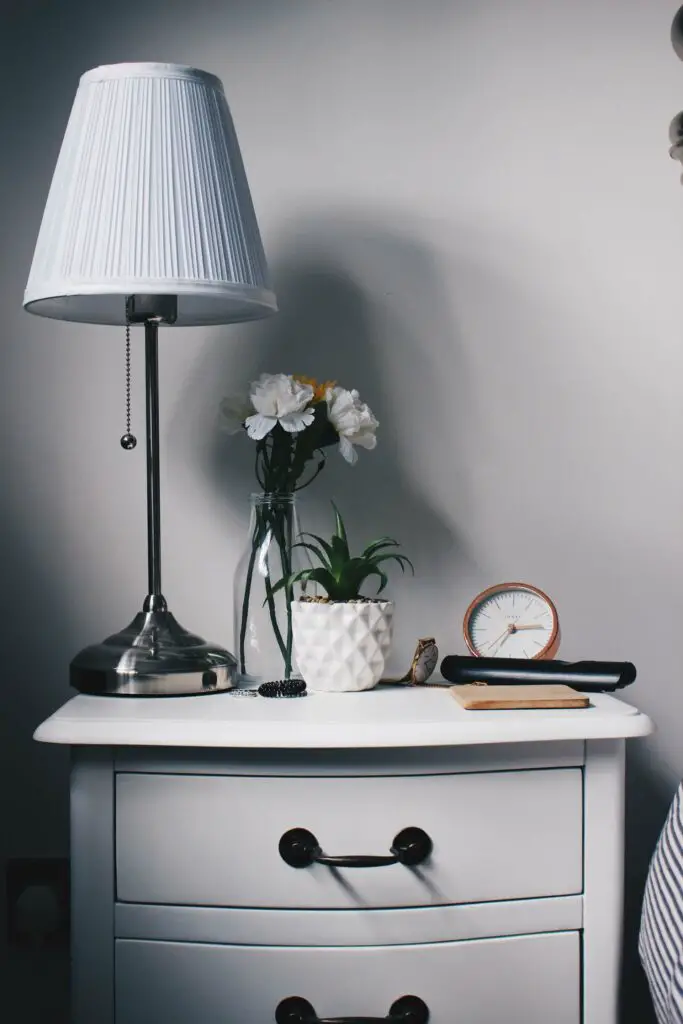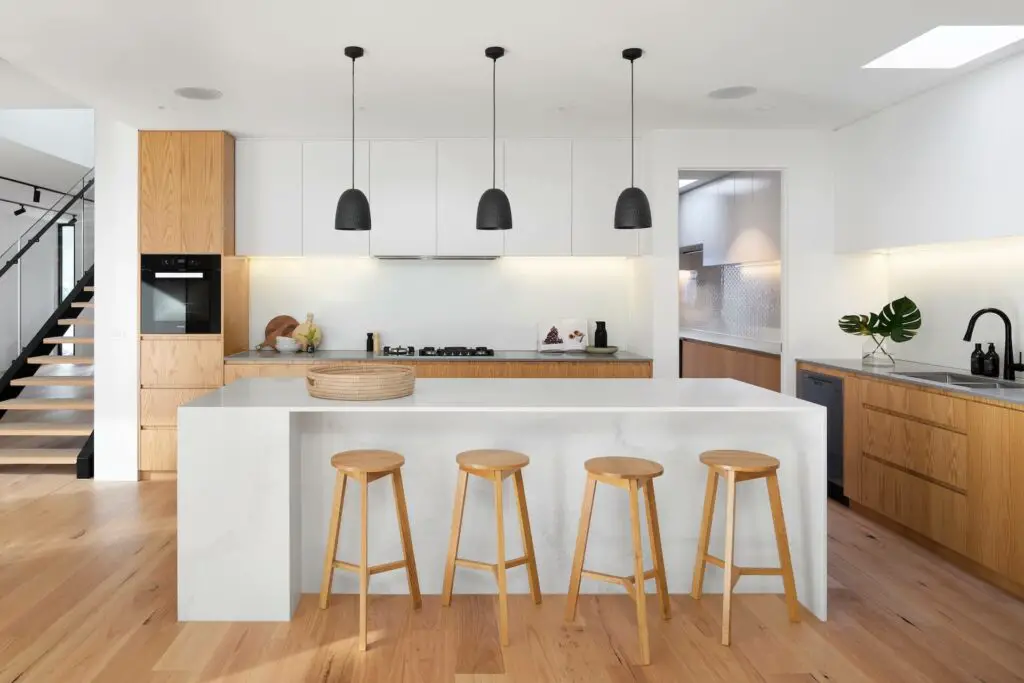Creating lighting schemes for bedrooms is one of my favorite things to do. Why you may ask? Well, because every person uses the bedroom in their own specific way based on their personality. Some people use it only to sleep, some to read, some to try on a million different clothes, and some spend most of their time in it.
So how many lumens you will need in your bedroom depends a lot on what you’re trying to achieve with your new lighting plan. How much light should you have in the bedroom to achieve balanced lighting?
Thankfully for you, this guide will lay out the necessary lumens for each type of activity in the bedroom. Let’s get started!

Ambient light (the main light source used to light up the room, such as a flush mount light) should be about 15 lumens per square foot (or 180 lumens per square meter) of your bedroom. Task lighting, such as the lamp on your bedside table, should be about 35 lumens per square foot (or 380 lumens per square meter) of your task area. LED strips should be 200-500 lumens per foot (600-1600 lumens per meter) and definitely connected to a dimmer switch.
So start by multiplying the width of your bedroom by the length (similarly for the task area you are trying to light) and then multiply that number by the lumens given above.
Remember, these are rough estimates and might not always be ideal. Let’s see why.
What Are Lumens And Why Are They Important?
Lumens are used to measure the amount of light that is emitted from a light source. The higher the number of lumens, the brighter the light.
This unit is the only relevant measure for brightness right now. It has almost completely replaced watts, which are outdated. Watts measure the energy used by the light source, which is not accurate for brightness anymore since we have developed way more energy-efficient light bulbs (e.g. LEDs).
If you have incandescent light bulbs, then it might be easier for you to convert watts to lumens.
So why should you care that much about the brightness of your bedroom?
A well-lit bedroom relies on brightness A LOT! You really need to nail your lumens so that you can achieve balanced lighting for all hours of the day and increase the functionality and coziness of your bedroom.
But don’t worry, because we will go through the steps you need to follow one by one!
How To Choose The Right Lumens For Your Bedroom
1. Bedroom size
The bedroom size will be the first factor to consider when determining your lumens. In general, you will need about 10-20 lumens per square foot (or 110-220 lumens per square meter) of your bedroom. The range depends on the overall brightness of your room and your preferences.
But remember! This only applies to ambient light.
Multiply the width of your bedroom by the length and then multiply that number with the above lumens. This is the number of lumens you should use for your ambient light source. Below we will see some of the best options for ambient light in bedrooms.
2. Type of task
One of the mistakes I see most often is people using ambient light to perform tasks. This is a big no-no for lighting designers, as it strains your eyes and is in general uncomfortable.
I get it though, it’s often hard to spot this mistake. Let’s make sure you don’t make it.
Common tasks in the bedroom are reading a book or dressing up. Think of the places in your bedroom where you actually do something. Do you need light on your bedside table? Do you have any furniture or mirrors that you use a lot? Do you iron your clothes in the bedroom?
All these are examples of bedroom tasks that can benefit from specialized lighting.

So for task lighting, measure the area you use for each task (e.g., the area of your bedside table and a small part of your bed) and multiply that by 30-40 for square feet or by 300-400 for square meters. That will give you the required lumens for your task lighting.
Similarly to ambient light, the range depends on the overall brightness of your room and your personal preferences.
Pro Tip: Install motion-activated LED strips under the bed and use a sensor. Super elegant feel and no more toe stubbing or blinding lights at night!
3. Special considerations
High ceilings
If your ceiling height is more than 10 feet (3 meters), you will need more than the above-recommended lumens for ambient light.
Why?
In the case of ceiling lights or recessed spotlights, the light source will be further away from the main bedroom area. With sconces or uplighters, more light will be diffused away from the source.
There is no clear-cut way around this, but I would suggest increasing your lumens by 5% for every extra foot (30 cm). Remember, it is better to over-light than under-light a space. And if you’re not sure, you can install dimmers to control the brightness.
Dark walls
It is not uncommon to see darker colors in bedrooms – something like dark gray or blue.
Although they might be more relaxing and create a cozy atmosphere, dark and earthly colors absorb more light and therefore increase your lumen needs.
If your bedroom walls are dark, go for about 10% more lumens than the above recommendations.
Pro Tip: Always try to maximize daylight in your bedroom. Use white or beige curtains and keep your windows unobstructed.
Best Fixtures For Bedroom
Ambient light
The best fixtures you can use to cover ambient light in your bedroom are:
- Chandelier
- Flush or semi-flush mount light
- Ceiling fan
- Cove lighting
Task light
For task lighting, you can use:
- Table lamps
- Floor lamps
- Sconces
- Swing-arm sconces
Accent light
The most common fixtures for accent lighting are:
- Picture lights
- LED strips
- LED pucks
- Uplighters (e.g., behind plants)

Wrapping up
A well-lit bedroom is essential for practical and convenience reasons. Besides, the bedroom is a very personal space – this is your chance to *shine* and make it look exactly the way you want to.
Follow the guidelines above to make sure your lighting scheme services you and maximizes your comfort and convenience.
To achieve a well-lit bedroom, you need to consider the type of light sources, the total number of lumens needed, the placement of the lights, and the type of light fixtures you will be using. With the right amount of light, you can create a relaxing and functional room that will be the safe space of your home!


